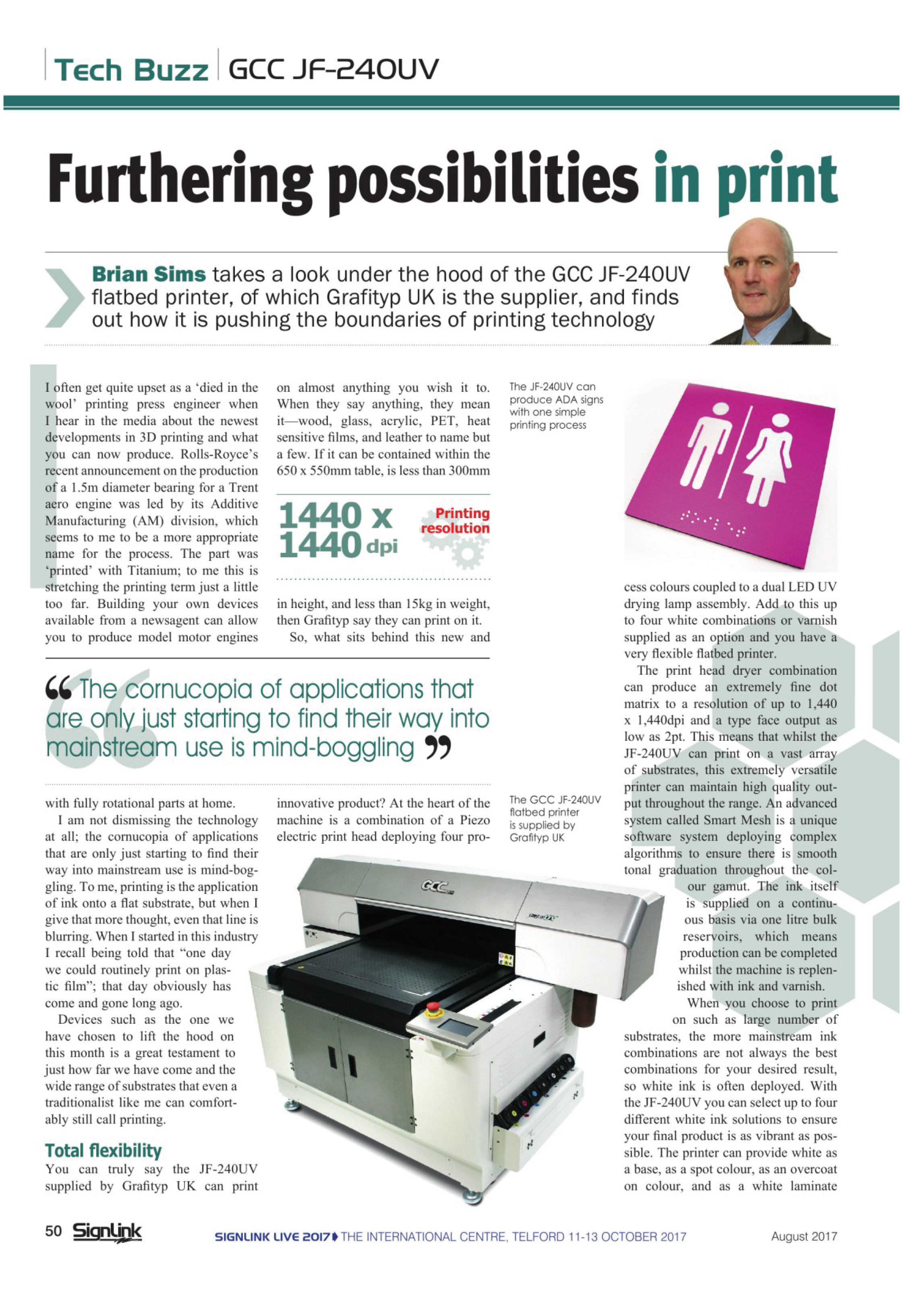GCC JF-240UV Product Review in SignLink Magazine | Laser Engraving, Vinyl Cutter, UV Printer - GCC
| Brian Sims takes a look under the hood of the GCC JF-240UV flatbed printer, of which Grafityp UK is the supplier, and finds out how it is pushing the boundaries of printing technology. |

